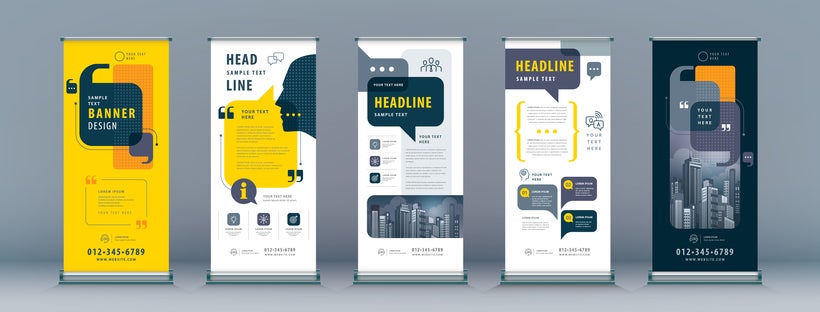When Is a Permit Required?

When advertising your business using different signage such as signs and decals, the following requirements must be met before applying for a permit:
- You require a permit to install, paint, repaint, hang, rehang, replace, or alter signage that exceeds a size of one square foot. You must install the signage on the exterior of a historic property building or within the initial eighteen inches of a glazed entryway of a historic property structure.
- On historic property, a permit is necessary for the installation, alteration, replacement, hanging, rehanging, refacing, or modifying of an awning, canopy, or marquee.
- A permit is necessary to install permanent signage on a historic property for rent, sale, lease, or premises management.
- A permit application to install a canopy, awning, marquee, or sign on a historic property must adhere to D.C. Construction Code and Section 306 through 313 and must include:
(a) A D.C. Application signed by the building owner or applicant for Construction Permit on Private Property and D.C. Application for Public Area (if applicable).
(b) Photographs of the building or site in good condition, showing close-ups of the area where work is planned, and sufficient to document the present appearance of the building or site.
(c) A dimensioned drawing of the awning, proposed sign, canopy, or marquee that precisely depicts the materials, dimensions, graphics, colors, kind of illumination, and attaching technique.
(d) Appropriately scaled or dimensioned plans, elevation drawings, or photo illustrations to represent the proposed work as it will look on the installation site.
(e) If the application is for a canopy, awning, or marquee, a section drawing and a sample of the finish materials is also required, if requested.
Making a Permit Application

Here are the steps to apply for a permit before installing any signage on the streets of Washington D.C.:
- An applicant must submit permission application papers to the Permit Processing Division of the Department of Consumer and Regulatory Affairs (DCRA) to be transferred to the Mayor’s Agent.
- The HPO shall assess the permit application and the results of any mandatory review by the Commission of Fine Arts upon receiving the application and take appropriate action within the authority conferred in Section 321.
- If the application fails to meet the standards and the HPO cannot remedy the problems directly with the applicant directly, the case shall be prepared by the HPO for Board review as established in Chapter 3.
Types of Approved Signs in Washington, D.C.

Signage shall be classified as appropriate depending on the unique characteristics of the historic site, building, or district. The following are the sign types that might be considered relevant, depending on their installation, design, and characteristics:
- Banner stands and displays
- Channel letter signs
- Blade signs
- Window signs
- Routed signs
- Hanging signs
- Three-dimensional signs
- Reverse channel signs
- Raceway signs
- Commemorative or informational markers, plaques, and medallions
- Halo lit signs
- Panel signs
- Projecting signs
- Painted signs
- Pin-mounted signs
The following types of signage are not regarded as appropriate to be installed on historic constructions and districts:
- Plastic-faced box or cabinet signs that are internally illuminated
- Pole-mounted signs over ten 10 feet tall
- Moving signage
Prohibited Types of Signage
The following types of signage are prohibited in Washington D.C.:
- Special signs and billboards, as defined in Section 2499, are not authorized on historic property.
- Revolving signs or roof signs are prohibited on historic property other than vintage or replica signs, as provided in Section 2413.
Signage Requirements in Washington D.C.

Here are the typical signage requirements that you must comply with before installing signage in Washington D.C.:
- Signage shall be relevant to the site, building, or historic district where it will be installed.
- Signage shall take advantage of and exhibit compatibility with the infrastructure’s composition, design elements, scale, and architectural features.
- Signage shall be sensitive to adjacent historic constructions and the streetscape of historic districts when installed in public areas.
- Signage installed on historic buildings shall facilitate the pedestrian environment.
- Repetitive signs which overwhelm, clutter, or visually draw away from a building façade or site are prohibited.
- Signs must feel and look lightweight. Signage elements such as raceways that are bulky, boxy, or scale inappropriately in regard to a historic property are prohibited.
- Signs that symbolically or graphically express a business or elements such as diversity, creativity, or individuality are favored.
- Loud branding colors or overwhelming visual effects that draw eyes away from the historical architecture of a building or district are prohibited.
- It is imperative to design and fabricate signage meticulously and using high-quality materials. It is highly recommended to use professional design and fabrication techniques when installing vinyl banners.


 Posted in
Posted in 



